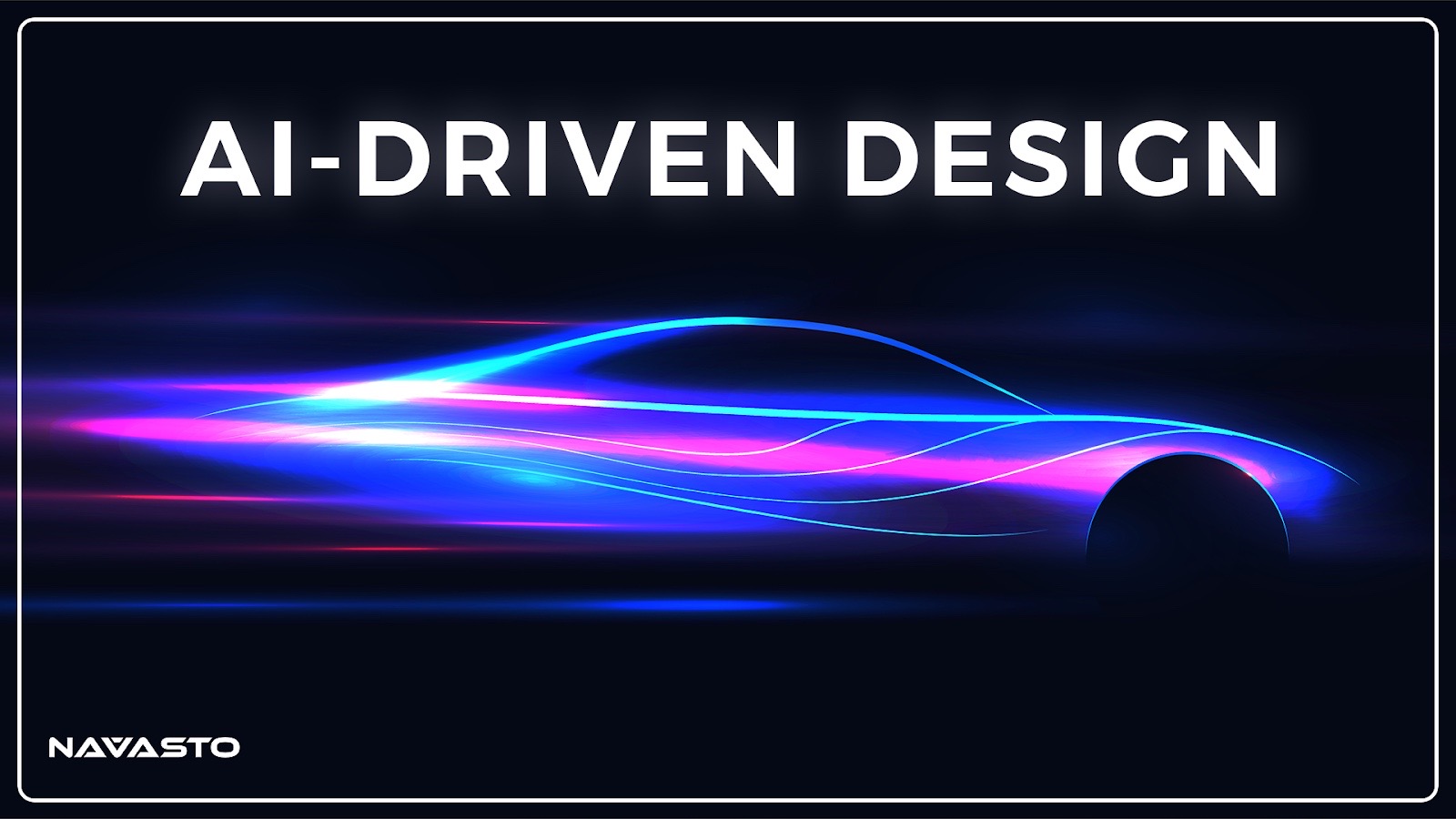Design at the Speed of Thought: Exploring AI-Driven Automotive Design and Optimization
In today’s world, where technology constantly pushes boundaries, AI-driven automotive design shows the automotive industry as a prime example of the importance of competitiveness and adaptability.
Generative design, real-time engineering, and multiobjective optimization redefine how vehicles are conceptualized, designed, and tested. This approach allows engineers to simultaneously consider various design goals, such as cost, performance, and sustainability, using AI to find the best balance. AI acceleration unlocks potential inherent to current automotive engineering processes, opening up new opportunities for companies.
This blog post will discuss an automotive use case that exemplifies this transformation. By showcasing NAVASTO’s AI-powered engineering solutions, we will highlight these technologies’ significant advantages and capabilities.
Contact us today for insights into optimizing and accelerating your design, modeling, and simulation workflows with AI integration.
The Rise of AI in Automotive Design
Generative design and real-time engineering are not just buzzwords but transformative technologies reshaping the automotive industry.
By leveraging artificial intelligence (AI) and machine learning (ML), engineers and designers can create, evaluate, and refine vehicle designs with speed and precision. Engineers can integrate real-time predictions into their engineering tools using tools like NAVPACK, enhancing decision-making processes and accelerating development cycles.
The comparison between AI prediction and the respective high-fidelity CFD result provides insight into the value of using this technology in the automotive design processes. An example that highlights the benefit of using AI in automotive design processes can be seen in Figure 1 below.
Figure 1: ROM prediction vs. High-fidelity CFD solution
Watch our webinar on AI workflow optimization
Optimization Integration
Generative AI, predictive AI, and parameter-free optimization are the core of this technological shift. These tools work synergistically to enhance the design process, allowing the exploration of a wide array of design alternatives based on predefined constraints and desired outcomes.
For example, AI can automatically generate inputs that optimize for specific parameters such as fuel efficiency, safety features, or cost-effectiveness, all in real-time. Discover how NAVASTO’s AI-driven solutions can transform your project by visiting our API solutions page.
Innovative Shape Modeling with Deep Learning
Incorporating state-of-the-art technology such as in the paper “DeepSDF: Learning Continuous Signed Distance Functions for Shape Representation“, NAVASTO is at the forefront of leveraging deep learning techniques for 3D shape modeling in automotive design.
This method provides a more nuanced and flexible approach to generating and refining complex geometries, enabling vehicles to be designed with precision that traditional methods cannot match.
The continuous SDF representation allows for intricate design features essential for the next generation of aerodynamic and aesthetically pleasing vehicle designs.
Learn more about how NAVASTO applies these groundbreaking techniques in our YouTube video about Generative Design, Real-Time Engineering, and Optimization.
Process Automation While Maintaining Design Integrity and Practicality
AI is a game-changer in automating design inputs. It allows for the generation of countless design iterations, enabling real-time predictions and optimizations that keep pace with the dynamic demands of automotive engineering.
This means that when a design concept is initiated, AI creates multiple versions of the design, each optimized for different criteria.
While the technology allows for the exploration of diverse configurations, it also respects the fundamental requirement that a car must still be recognizable and functional as a car.
This balance between innovation and practicality ensures that the designs remain viable for real-world application.
Efficient Evaluations and Enhanced Recommendations Through Advanced Strategies
With the ability to perform rapid evaluations, AI-driven systems like NAVASTO’s navDesign for Blender® can test hundreds of different configurations in a fraction of the time it would take human engineers. This capability is significantly boosted by a recommender system that provides design recommendations based on advanced analytics, letting designers and/or engineers quickly identify the most promising designs. Aerodynamic properties like lift and drag, critical to the vehicle’s performance and fuel efficiency, can be optimized through these suggestions.
The following YouTube video showcases NAVASTO’s Blender plugin with an example of an automotive flow physics prediction model.
This capability significantly boosts productivity and lets designers quickly identify the most promising designs. Aerodynamic properties like lift and drag, critical to the vehicle’s performance and fuel efficiency, can be optimized.
Advanced optimization strategies, such as Surrogate-Based Optimization and Differential Evolution, enable the system to generate and refine design recommendations swiftly. This process ensures the proposed designs are innovative, achievable, and aligned with specific design targets.
By comparing different optimization strategies, such as differential evolution versus zero-based optimization, the technology highlights its efficiency in achieving design targets with fewer resources and less time.
This aspect is crucial in a competitive industry where speed to market can be as important as the product itself.
Real-World Impact and Future Outlook
Integrating generative design, real-time engineering, and optimization into automotive design processes enhances productivity and decision-making capabilities, paving the way for more intelligent and efficient vehicle design. The use of optimization techniques, including the evaluation of Pareto fronts, redefines the future of automotive design by enabling faster, more efficient, and practical design processes that can simultaneously optimize multiple objectives like cost, performance, and manufacturability
These technologies redefine the future of automotive design by enabling faster, more efficient, and practical design processes.
Ready to enhance your automotive design process with cutting-edge AI technologies? Contact us today to learn how our solutions can drive your success.
Ride into the future of automotive innovation with Navasto!

